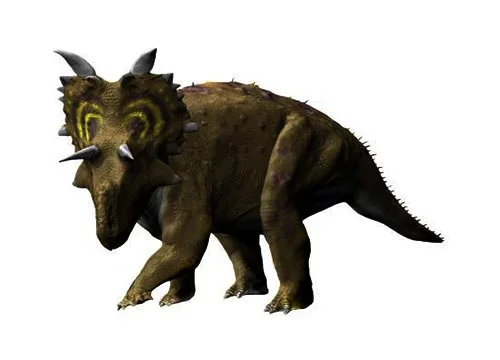Xenoceratops (Alien horned face)

Zee-noe-seh-rah-tops
M. J. Ryan, D. C. Evans & K. M. Shepherd - 2012
Herbivore
Estimated 5 meters long
Ceratopsian
X. foremostensis (type)
Canada, Alberta - Foremost Formation
Late Cretaceous, 76 million years ago
Xenoceratops Facts
Xenoceratops, meaning “alien horned face,” is a genus of herbivorous dinosaur that lived during the Late Cretaceous period, around 76 million years ago. It was a member of the Ceratopsidae family, which includes the well-known Triceratops.
Xenoceratops is known from a single specimen, which was discovered in 1958 by a geologist named Wann Langston Jr. in the Judith River Formation in Alberta, Canada. The specimen was not officially described until 2012, when a team of researchers led by David Evans named and described the dinosaur.
Xenoceratops was a relatively small ceratopsid, with an estimated length of around 5 meters (16 feet) and a weight of around 1 ton. It was a quadrupedal dinosaur with a short snout, a parrot-like beak, and a row of curved horns on its frill. The horns on its frill were unusually large and curved backward, giving it a unique appearance compared to other ceratopsids.
Xenoceratops likely lived in a forested environment and fed on low-growing vegetation. It may have used its horns for display or to defend itself from predators. Its fossils have been found alongside those of other dinosaurs, such as the theropod Albertosaurus and the hadrosaur Gryposaurus.
Xenoceratops is a relatively new discovery, and researchers are still learning about this dinosaur and its place in the ceratopsid family tree. Its unique frill ornamentation and smaller size compared to other ceratopsids make it an important find for understanding the evolution of this group of dinosaurs.



